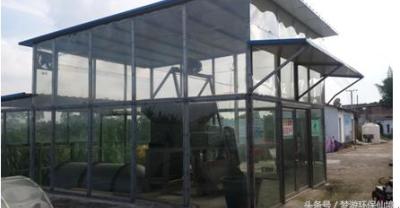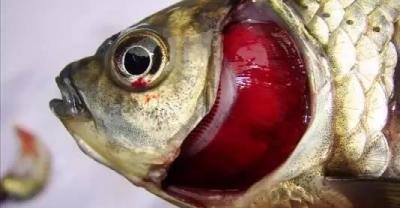Effective treatment methods for breeding and slaughtering animal carcasses
I. Technical background
With the rapid development of animal husbandry and the continuous improvement of scale and intensification, the number of animal organizations, dead pigs and abnormal dead animals has increased, which has become a prominent problem affecting the current food safety, the prevention and control of animal diseases and the sustainable development of animal husbandry. If not handled properly, it will also cause serious environmental pollution, infectious diseases, and a direct threat to social public health and security. How to deal with sick and dead animals effectively has become a new problem in the development of animal husbandry and even social development. It is urgent to find a safe, effective, environmentally friendly, economically feasible harmless treatment technology for sick and dead animals.
At present, there are mainly three harmless treatment methods for animal tissue and abnormal death of livestock and poultry, namely, incineration, deep burial, high temperature and high pressure treatment.
1. Incineration treatment: not only the cost of incineration equipment is high, one incineration equipment is generally more than 300000, but also a large amount of dust, carbon monoxide, nitrogen oxides, sulfides and other pollutants are produced in the treatment process, which have a significant impact on the environment; the operating cost of incineration is relatively high, for example, the energy cost of burning a 100kg dead pig is about 50 yuan, and labor costs are not included.
2. Deep burial treatment: this method is not suitable for large-scale farms at all. According to regulations, dead pigs are buried in pits at least 2 meters below, sprinkled with quicklime and covered with quicklime. There are many problems in the actual operation: 1). Due to the disease and death of animals in large-scale farms almost every day, there are not so many places to dig and bury them. According to the requirements, digging a pit 2 meters deep will cost at least 100 yuan for one operation. 2). In the actual operation, the depth of the pit is rarely more than 1 meter, and the epidemic prevention requirements are not up to standard. 3)。 If the sterilization is not complete, it is easy to produce secondary pollution and bacteria spread again, and it will cause pollution to groundwater, soil and other natural environment. As a result, it has now evolved into a digestion tank, where dead pigs are naturally decomposed in sewage or chemicals; it takes a long time, is inefficient and has a bad environment.
3. High temperature and high pressure method: taking the whole system of organic fertilizer produced in Taiwan as an example, there are the following problems: 1). The input cost of the equipment is very large, at least 400000 per set; 2.) large-scale farms can not meet the number of treatment, and no matter how much equipment needs the same heating and fermentation cost, the treatment cost is very high; 3). It takes about 3 days to deal with it at a time, and it is impossible to deal with the sick and dead animals at any time every day, and a supporting cold storage is needed.
The treatment method developed by our company makes use of composting technology and the strong decomposition of bacteria, combined with mechanical crushing to expand the contact surface, so as to decompose animal carcasses with high efficiency and low cost. This technique thoroughly solves the problems existing in the above three commonly used methods, and has obvious advantages. Take the annual output of 10,000 pig farms or 500000 poultry per year as an example:
1. Covers a small area: 30-50 square meters of fully closed crushing treatment area, plus 500 square meters of decomposition area, a total area of about 600 square meters, 60% less than other technologies
two。 Low construction cost: the total investment is only 25-300000, which is 70% less than using high-temperature method.
3. The cost of treatment is low: the cost of treating a 100 kg dead pig or 100 1 kg heavy poultry is only about 5-10 yuan (including labor, electricity, bedding and a small amount of bacteria), which varies from place to place. )
4. Round-the-clock treatment at any time: crushing a 100-kilogram dead pig takes only a few minutes and can be treated continuously; the decomposition area is generally treated with compost for 10-15 days.
5. Environmental protection and no secondary pollution: the operation of this technology only needs multi-fiber cushions, a small amount of electrical and microbial preparation products, no harmful gases and odors, and no maggots in the fully closed system.
6. Safe and reliable: the treatment system of this technology is a complete set of biological treatment system, in which the animal carcass is decomposed in a slightly acidic and continuous high temperature environment, and the viruses, pathogenic bacteria and parasites in the animal body are generally completely killed within 7 days; the used bedding materials have to be composted by sealed high-temperature fermentation heap before making farm manure, so there is no biosafety problem.
7. Electronic automatic video recording of the whole process: as the central or local governments generally have subsidies for the active and harmless treatment of sick and dead livestock and poultry, the invention can automatically record truthfully, and there is no need for epidemic prevention personnel to come to the scene. The relevant personnel only need to hand over the video data to the epidemic prevention staff to confirm the quantity, time and place, thus ensuring the implementation of the policy and the rights and interests of the breeding owners.
8. Reuse of waste: the treated animal carcasses and padding materials are composted and fermented again by microorganisms to become high-quality organic farm manure and can be recycled.
II. Technical content
The powerful biological treatment equipment consists of the following parts: crusher, lifting bucket, mixing tank, spray cleaning system (including outdoor probiotic containers), double ultraviolet germicidal lamp, exhaust fan, positioning video recording device, electronic control operation device, indoor padding bucket, indoor temperature and humidity display, fermentation treatment tank display, closed treatment house. The crushing treatment area + composting decomposition area covers a total area of about 600 square meters, about 1 mu.
The implementation steps of the strong biological treatment are as follows: 1). In a fully closed treatment chamber, the crusher crushes the animal carcass into a pulp; 2). Transported to the mixing tank by the conveyor; 3). The cushion of the mixed compound heat-producing microbial fermentation bacteria is added to the mixing tank and stirred evenly. 4)。 The fermentation temperature was maintained above 40 ℃, the average temperature was 45-55 ℃, the highest was 70 ℃, and the fermentation time was about 10-15 days. 5.) the bedding material after fermentation in the heap area becomes agricultural organic fertilizer. 6)。 Every time the power of the processing machine is started, the synchronous monitoring dual-lens video recorder automatically records all the information of the processing process. The video recorder has the function of GPS positioning, recording the geographical location of processing, recording the specific time and quantity of animal carcasses, and so on.
III. Safety assessment
The biosafety of sick and dead livestock and poultry animals is the focus of everyone's attention, this technology has the following aspects to ensure biosafety.
1. This set of equipment fully enclosed indoor crushing treatment area is in a probiotic environment control area, the use of microbial species in line with China's GB20287-2006 standard, each gram of cushion in the treatment pool contains probiotics "100m cfu/g; other areas often irregular spray probiotic flora. The number of probiotics in the air is more than 1000 times that of the normal environment, the whole environment is in a slightly acidic environment (pH is less than 5.0), viruses such as foot-and-mouth disease virus, blue ear virus, avian influenza, harmful microorganisms such as Escherichia coli, Staphylococcus aureus, etc., these microorganisms are easy to kill.
two。 The micro-acid environment in the fermentation tank is not suitable for viruses and harmful microorganisms, and the high temperature of more than 60 ℃ produced during fermentation can kill these viruses. Even the heat-resistant Escherichia coli can not survive in this temperature and acid environment for more than 6 hours.
3. Strong ultraviolet germicidal lamps are installed into the room and at the exit of the exhaust fan to ensure greater safety.
Fourth, the scene photos of the achievement case:

Processing equipment settings panorama

Crusher

Fermentation stacking area

Internal structure of crusher

Crusher

- Prev

Attention should be paid to the prevention and control of rotten tail disease in crayfish culture
When crayfish farmers breed crayfish under the natural environment, crayfish are not easily infected with bacteria, but in the culture environment where the culture area is limited.
- Next

Popular science: general knowledge of ammonia nitrogen degradation in aquaculture water
Aquaculture friends may know that it is important to control the concentration of ammonia nitrogen in aquaculture water. Therefore, how to effectively control ammonia nitrogen and degrade ammonia nitrogen has become each.
Related
- On the eggshell is a badge full of pride. British Poultry Egg Market and Consumer observation
- British study: 72% of Britons are willing to buy native eggs raised by insects
- Guidelines for friendly egg production revised the increase of space in chicken sheds can not be forced to change feathers and lay eggs.
- Risk of delay in customs clearance Australia suspends lobster exports to China
- Pig semen-the Vector of virus Transmission (4)
- Pig semen-the Vector of virus Transmission (3)
- Five common causes of difficult control of classical swine fever in clinic and their countermeasures
- Foot-and-mouth disease is the most effective way to prevent it!
- PED is the number one killer of piglets and has to be guarded against in autumn and winter.
- What is "yellow fat pig"? Have you ever heard the pig collector talk about "yellow fat pig"?

